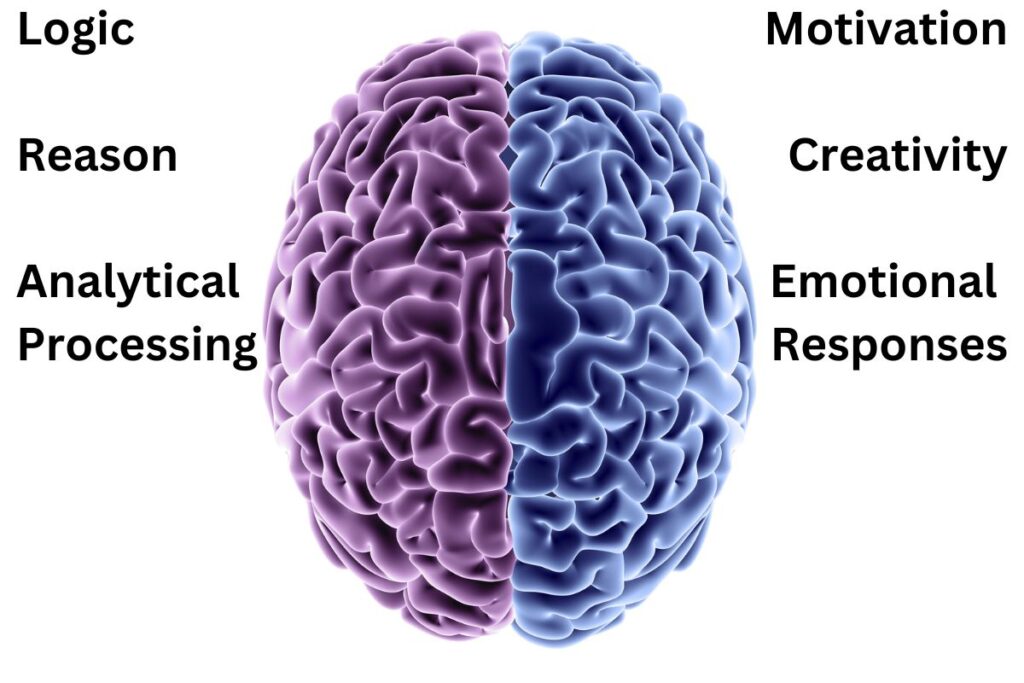Our brains have a natural way to recover from traumatic memories and events. This process involves communication between the amygdala (the alarm signal for stressful events), the hippocampus (which assists with learning, including memories about safety and danger), and the prefrontal cortex (which analyzes and controls behavior and emotion). Many times traumatic experiences need some additional help in being processed and resolved.
Stress responses are part of our natural fight, flight, or freeze instincts. When distress from a disturbing event remains, the upsetting images, thoughts, and emotions may create an overwhelming feeling of being back in that moment, or of being “stuck in time.” One technique that helps people move from repeating a trauma response to moving forward in their healing process is Emotional Brain Rebalancing.
In our brain, we have logic, reason and analytical processing in the left hemisphere. The brain’s right hemisphere processes motivation, creativity and our emotional responses. When a trauma has occurred it can produce an imbalance in the response of the brain.
The goal of Emotional Brain Rebalancing is helping the brain process and store the experiences in a more balanced state in both the left and right hemispheres. In other words, helping the heightened traumatic emotions to decrease while increasing the logical processing of the event so that a healthy state of balance returns to the individual.
In the late 1980’s psychologist, Dr. Francine Shapiro, discovered a connection between eye movement and persistent upsetting memories. With this personal insight, she began what became a lifelong study and development of Eye Movement Desensitization and Reprocessing (EMDR) therapy.
EMDR therapy has been demonstrated to be effective for treating trauma in randomized clinical trials, case studies, and millions of clinical hours treating trauma and trauma-related disorders across the globe.
By using some of the effective components of this research, emotional rebalancing the brain’s left and right hemispheres can be effectively achieved.
Some of this rebalancing occurs naturally as we go about our normal routines. When you have been trying to find a solution to a problem in which you’re struggling with, or needing some creative direction with a project that you’re working on, in these moments, if you can go for a walk, often within about 30 minutes, you can gain clarity and find the solution. This back and forth activity stimulates both sides of your brain, contributing to brain balancing. As your left and right hemispheres work together, stress is reduced and processing is much more effectively.
On September 21, I will be sharing about emotional brain rebalancing and other effective tools I use to help people recover from traumatic stress at the Natural Wellness Summit, in Morristown, TN. There will be many other presenters sharing wonderful information to help you and your family walk in wellness and abundant life. I hope you will make plans to join us! Get your ticket here.
Continue the Pursuit,
Denise







